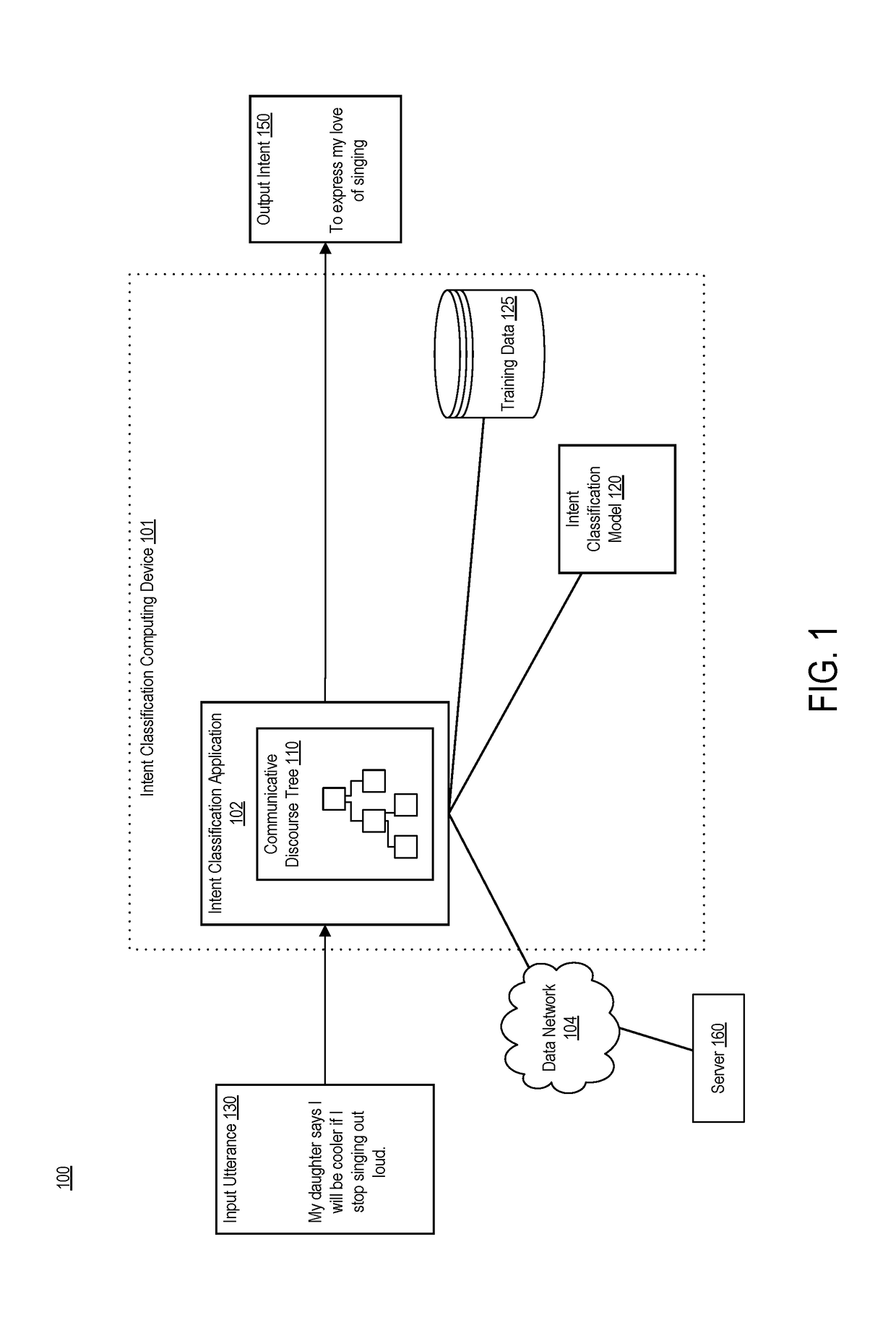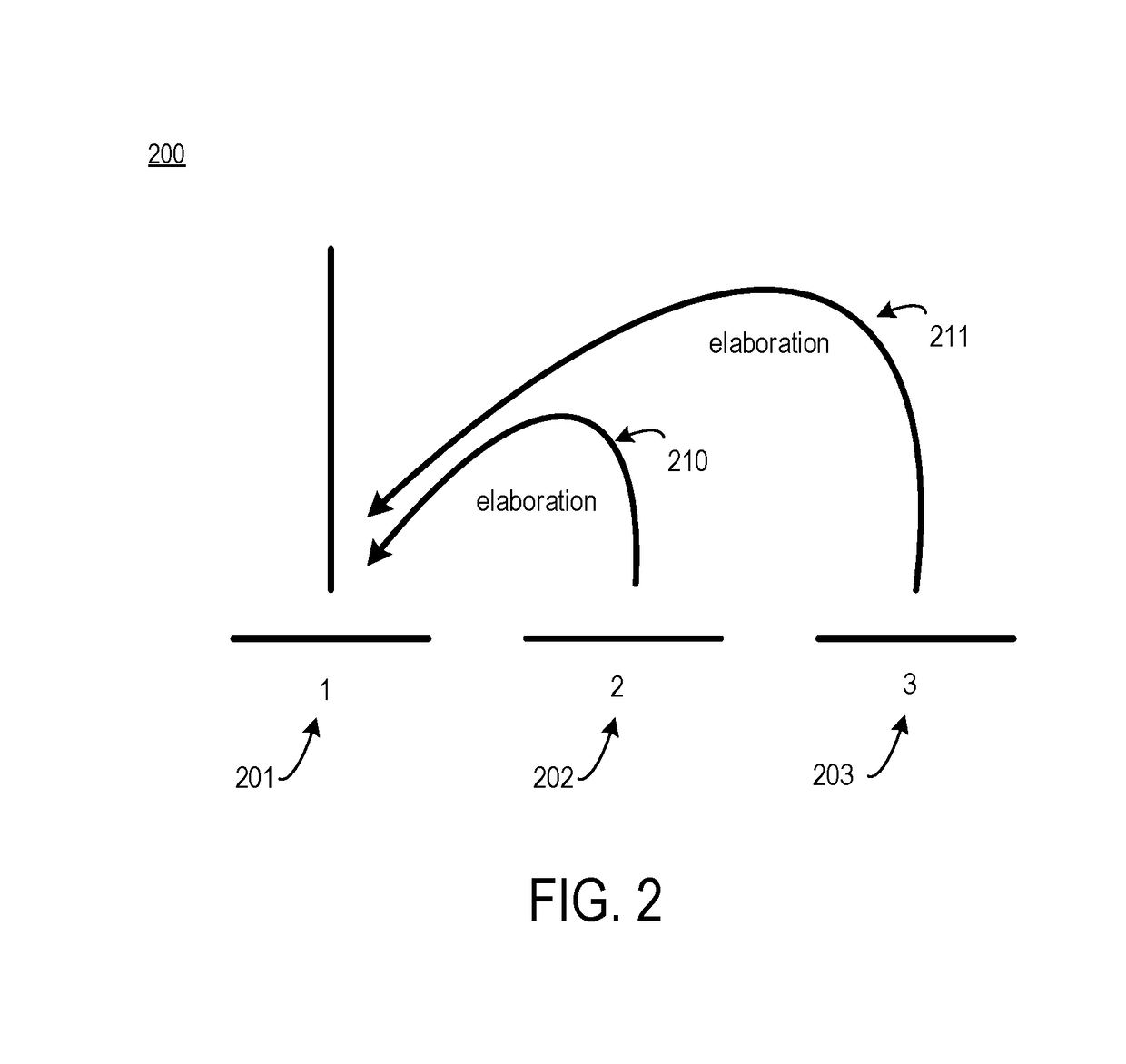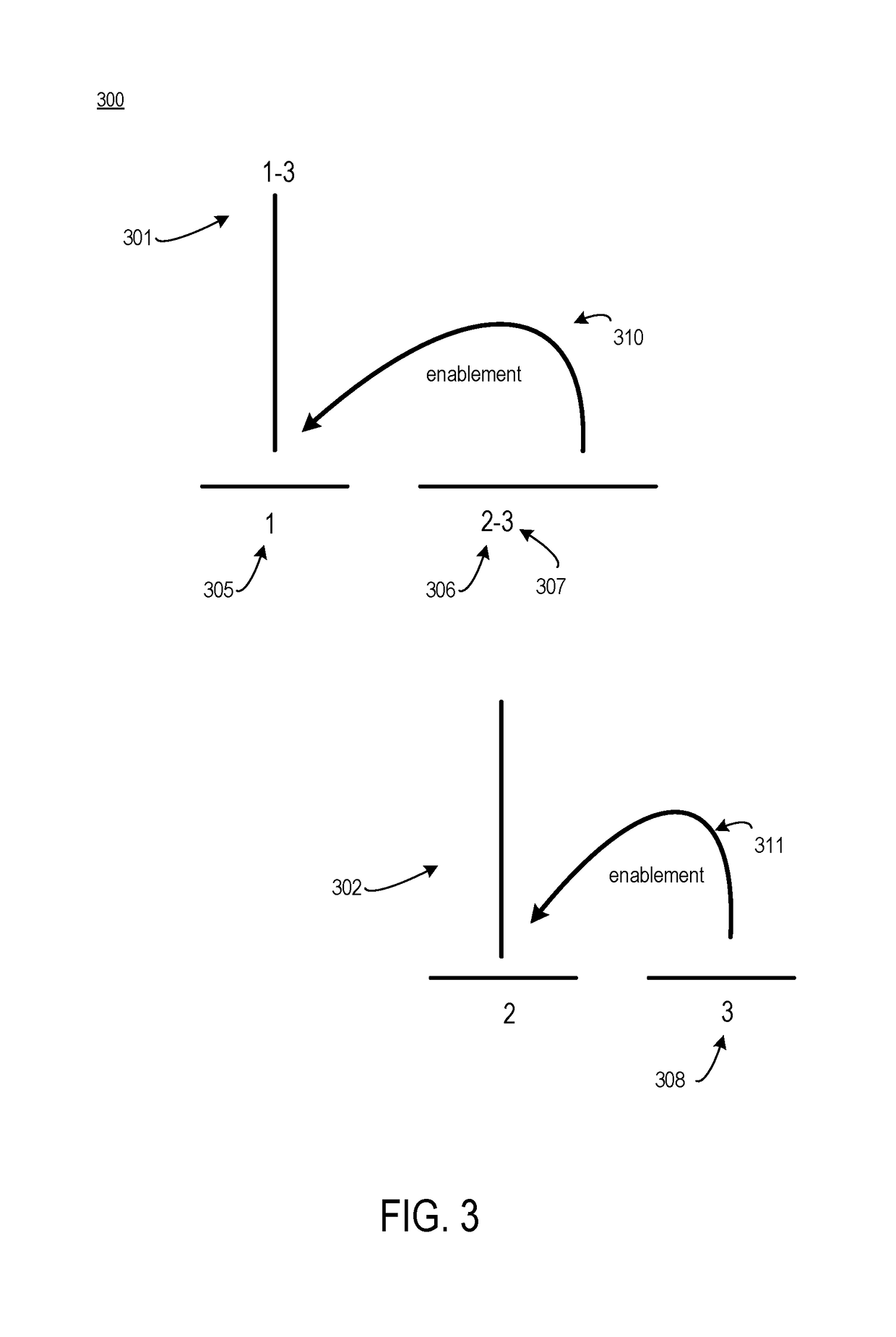Tree kernel learning for text classification into classes of intent
a tree kernel and intent technology, applied in the field of linguistics to improve text classification, can solve the problems of insufficient solutions to reliably determine a class of documents, difficult keyword-based solutions, and ineffective keyword classification, so as to minimize the loss function and minimize the loss function
- Summary
- Abstract
- Description
- Claims
- Application Information
AI Technical Summary
Benefits of technology
Problems solved by technology
Method used
Image
Examples
Embodiment Construction
[0044]Aspects described herein improve electronic text classification systems by more accurately determining an intent of a speaker or writer of sentence or an utterance than possible with traditional keyword-based solutions. More specifically, by representing text as communicative discourse trees (CDTs) and using machine learning, aspects described herein automatically determine an intent in a sentence or utterance from a predefined set of intents.
[0045]“Communicative discourse trees” or “CDTs” include discourse trees that are supplemented with communicative actions. A communicative action is a cooperative action undertaken by individuals based on mutual deliberation and argumentation.
[0046]Intent is not always clear from the text of a sentence. For example, the question “how much is this book?” can be interpreted literally as a question about the cost of the book in dollars, or can be interpreted as, for example, when posed by a child to an adult, as “can you buy me this book?” Ac...
PUM
 Login to View More
Login to View More Abstract
Description
Claims
Application Information
 Login to View More
Login to View More - R&D
- Intellectual Property
- Life Sciences
- Materials
- Tech Scout
- Unparalleled Data Quality
- Higher Quality Content
- 60% Fewer Hallucinations
Browse by: Latest US Patents, China's latest patents, Technical Efficacy Thesaurus, Application Domain, Technology Topic, Popular Technical Reports.
© 2025 PatSnap. All rights reserved.Legal|Privacy policy|Modern Slavery Act Transparency Statement|Sitemap|About US| Contact US: help@patsnap.com



